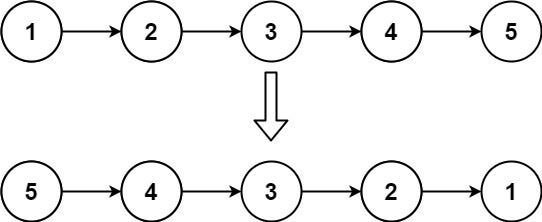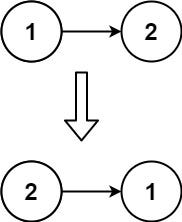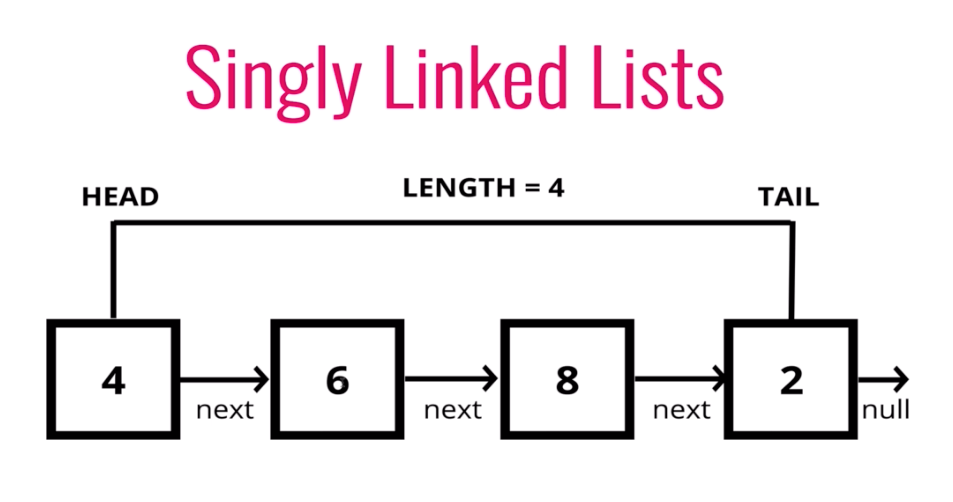[LeetCode] #206_Reverse Linked List

206_Reverse Linked List belongs to the EASY category. I started learning about Data Structures this month and have never implemented an actual linked list on a problem before. So this one is quite challenging and fun to do. In this post I’m only covering the iterative solution.
Problem description:
Given the head of a singly linked list, reverse the list, and return the reversed list.
Example 1:

Input: head = [1,2,3,4,5]
Output: [5,4,3,2,1]
Example 2:

Input: head = [1,2]
Output: [2,1]
Example 3:
Input: head = []
Output: []
Constraints:
The number of nodes in the list is the range [0, 5000].
-5000 <= Node.val <= 5000
Follow up: A linked list can be reversed either iteratively or recursively. Could you implement both?
Breaking down the problem in my own words:
- Our function takes in one parameter : the head of a singly linked list
- Our function should be able to reverse the linked list and return the new head
- There are two ways to do it: iteratively or recursively
- They also provide the definition of a singly linked list in the online editor:
* Definition for singly-linked list.
* function ListNode(val, next) {
* this.val = (val===undefined ? 0 : val)
* this.next = (next===undefined ? null : next)
* }
To my understanding, a singly linked list consists of nodes pointing to their next node with one-direction pointers, which means a node cannot be pointing to another node in two different directions at the same time:

source: JavaScript Algorithms and Data Structures Masterclass
And with the constructor function ListNode(val, next) provided, we can assign a value to the next node with this.next
Solution 1 — Iterative
In order to “reverse” the linked list, we can remain the order of the nodes but change the direction of the pointer to pointing backwards:

- Originally we have node 1 pointing to node 2, (node 2 pointing to null) like 1 -> 2 -> null. What we’re gonna do here is to make node 2 point backwards to node 1, (and node 1 points to null). 2 -> 1 -> null
- We need to change node 1’s pointer direction, and let node 1 (which is our current head) point to null. But if doing so without storing the node 2 (head.next) value beforehand, we would end up not being able to access it later.
- So now we are iterating through the list, we need 3 variables to keep track of where we are in the process: previousNode , currentNode , and nextNode
- Then in every iteration we update these three variables:
- start from assigning head to currentNode
- store the next node of currentNode in nextNode
- reverse pointer direction of currentNode, from originally pointing to nextNode to now pointing to previousNode
- now there’s nothing pointing to nextNode , also the pointer was gone
- now make currentNode our previousNode
- and make nextNode our currentNode
- move on to a new loop of step 2.~6. until we reach the point when currentNode === null
- break from the loop and return previousNode (the tail of the original linked list, which is now the new head)
const reverseList = function(head) {
let previousNode = null
let currentNode = head
let nextNode = null
while (currentNode !== null) {
// store next node
nextNode = currentNode.next
// reverse pointer direction
currentNode.next = previousNode
// cut off pointer from currentNode to nextNode
// good thing we have saved nextNode for later access
// move previous node to current node
previousNode = currentNode
// move current node to nextNode that we've saved earlier
currentNode = nextNode
}
return previousNode
}

Results:
Runtime: 72 ms
Memory Usage: 41.1 MB
